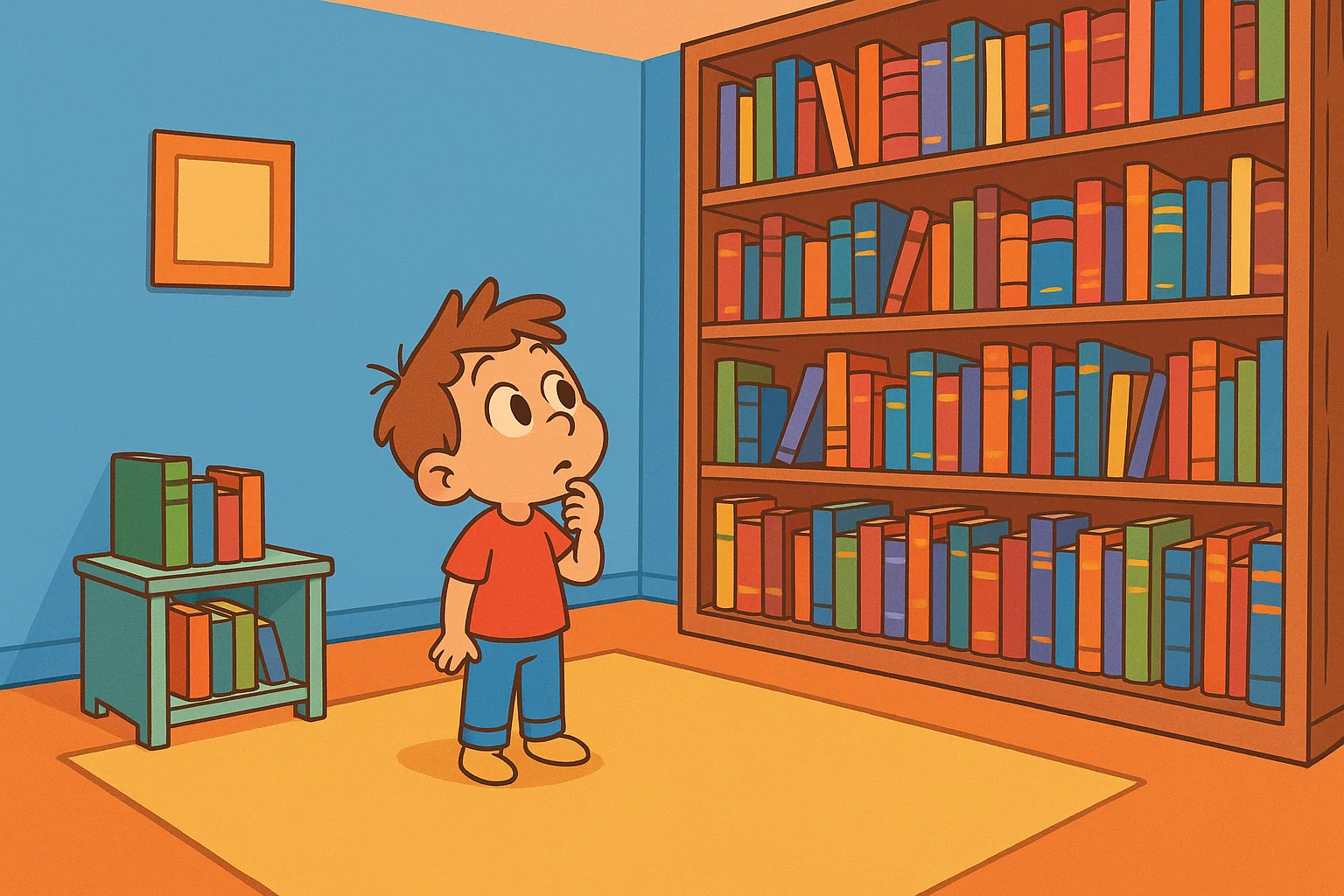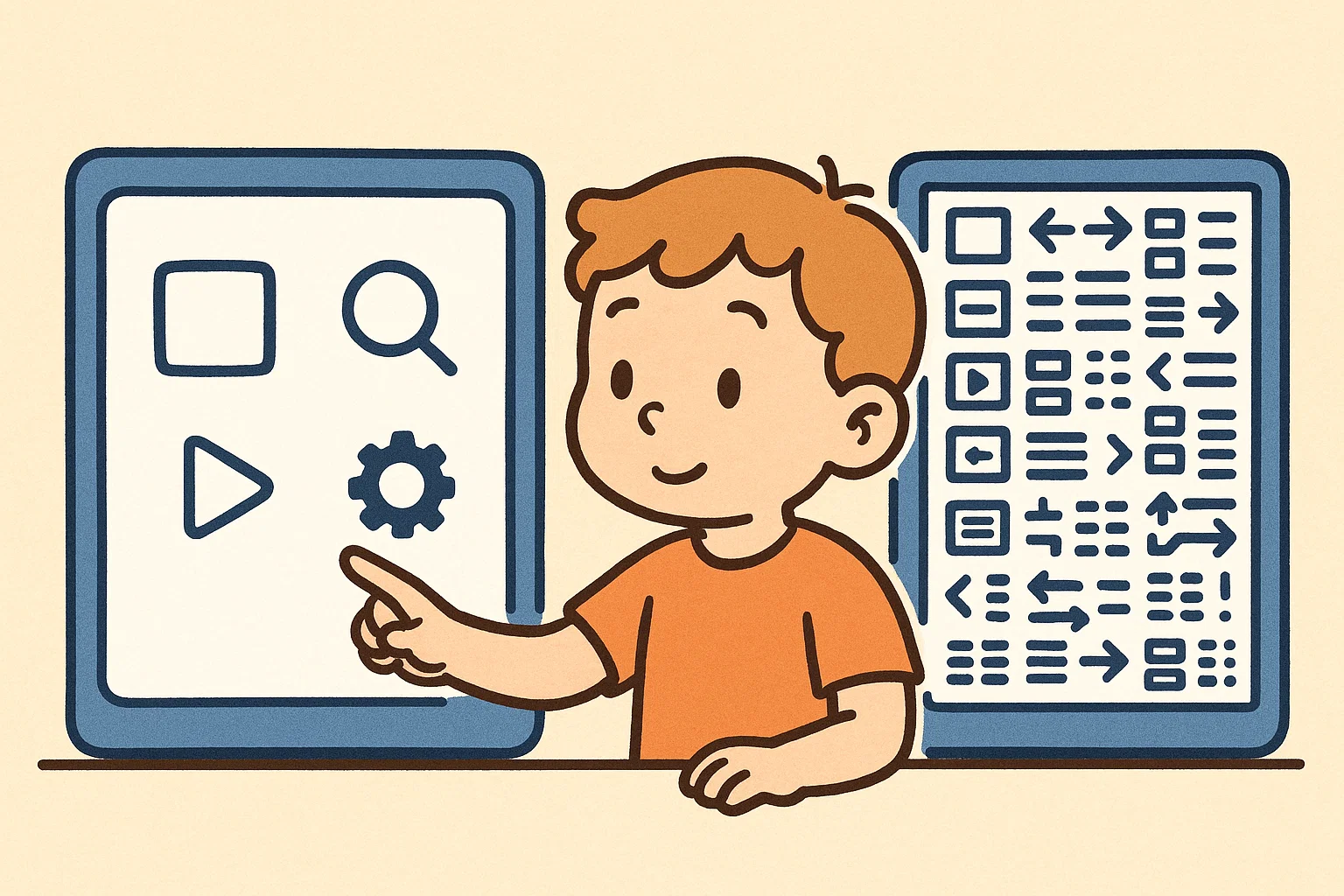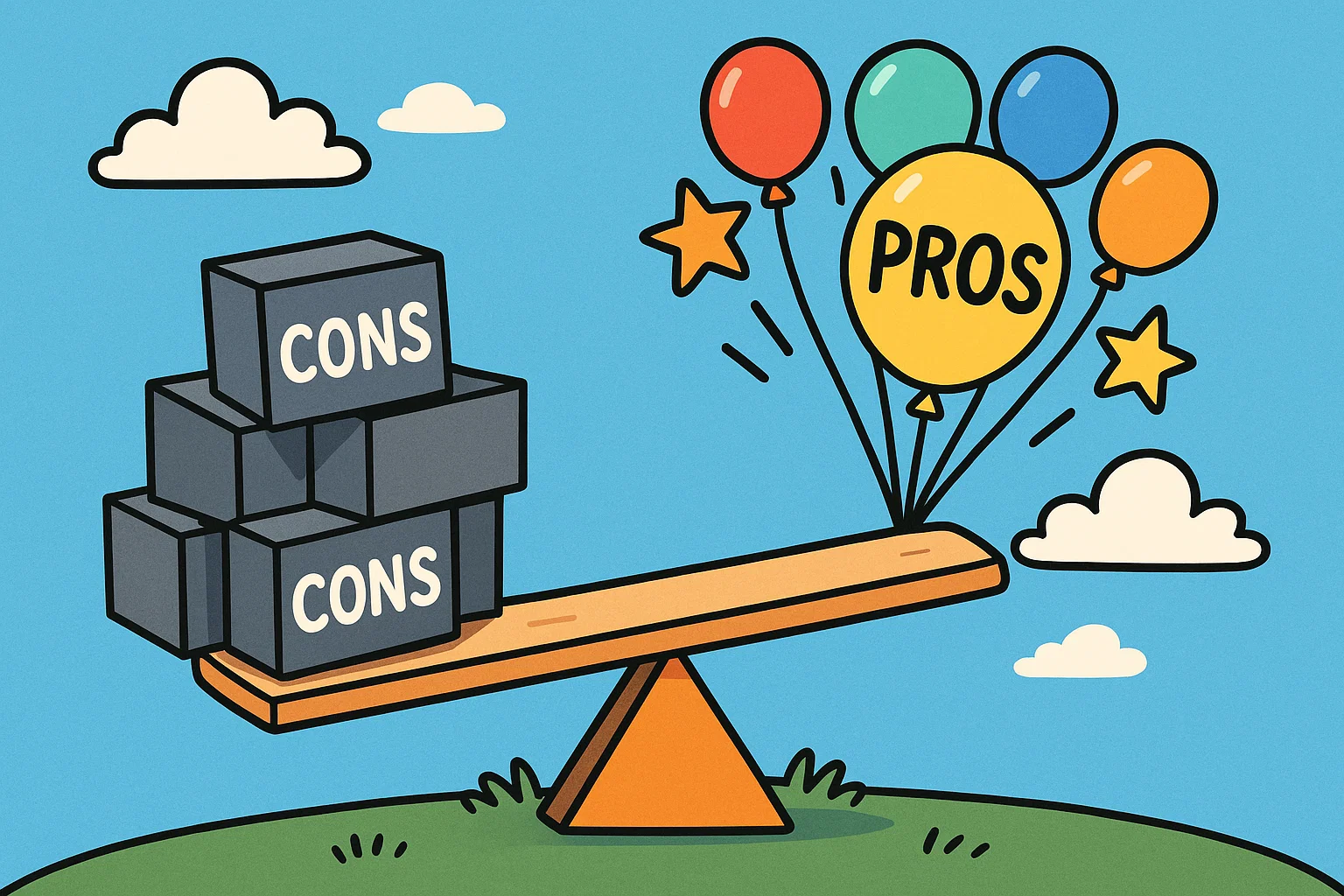YouTube Kids vs Kidoodle.TV: Complete Comparison
Choosing the right video platform for your child can feel overwhelming with so many options available. Two platforms that consistently rise to the top of parents’ consideration lists are YouTube Kids and Kidoodle.TV. Both promise safe, age-appropriate content, but they take distinctly different approaches to achieving this goal.
As a child development expert who has worked with families navigating digital media for over a decade, I’ve seen firsthand how the right platform choice can enhance learning while the wrong one can create unnecessary stress for parents. This comprehensive comparison will help you make an informed decision based on your family’s specific needs and values.
Safety and Parental Controls 🛡️
Safety remains the primary concern for parents when selecting a video platform for children. Both YouTube Kids and Kidoodle.TV prioritize child safety, but their methods differ significantly.
Content Review Process
YouTube Kids relies on a combination of automated systems and human reviewers to filter video from the broader YouTube ecosystem. The platform uses machine learning algorithms to identify potentially inappropriate material, though this system isn’t foolproof. According to Google’s transparency reports, millions of videos are reviewed monthly, but some questionable videos may still slip through the automated filters.
Kidoodle.TV takes a more conservative approach by pre-screening every single video before it appears on the platform. Their team of child development experts and educators manually reviews each piece of content, ensuring it meets strict educational and entertainment standards. While this results in a smaller video library, it provides parents with greater confidence in content appropriateness.
Setting Screen Time Limits
| Feature | YouTube Kids | Kidoodle.TV |
| Built-in timer | ✅ Yes | ✅ Yes |
| Custom time limits | ✅ Multiple options | ✅ Flexible settings |
| Break reminders | ✅ Yes | ✅ Yes |
| Weekly reports | ✅ Yes | ❌ No |
Both platforms offer robust screen time management tools. YouTube Kids provides detailed viewing reports that show exactly what your child watched and for how long. Kidoodle.TV offers similar timer functionality but focuses more on encouraging natural break points in programming.
Blocking Channels and Content
YouTube Kids excels in this area, allowing parents to block specific channels, videos, or even search terms. The platform’s “Approved Content Only” mode lets parents manually select every video their child can access, providing maximum control for cautious families.
Kidoodle.TV’s pre-screened approach means there’s less need for individual blocking, though parents can still restrict access to specific shows or categories. The trade-off here is control versus convenience – YouTube Kids offers more granular control, while Kidoodle.TV provides peace of mind through comprehensive pre-screening.
Age Restrictions and Profiles
YouTube Kids segments content into four age groups: Preschool (4 & under), Younger (5-7), Older (8-12), and All Kids. Each profile type filters video based on developmental appropriateness, though parents report that the boundaries between age groups can sometimes feel arbitrary.
Kidoodle.TV organizes video by more specific age ranges and developmental stages, with categories like “Toddler Time” and “Tween Zone.” Their child development experts ensure that the video aligns with cognitive and emotional development milestones for each age group.
Ad-Free Options
YouTube Kids offers limited ad-free viewing through YouTube Premium subscriptions, though most free users will encounter ads between videos. These ads are specifically chosen for children and undergo additional review processes.
Kidoodle.TV provides completely ad-free experiences in its premium tiers, which many parents find worth the investment to avoid commercial interruptions during educational programming.
Content and Variety

The type and quality of available content often determines which platform best serves your family’s needs.
Types of Content Available
YouTube Kids draws from the vast YouTube ecosystem, offering everything from animated nursery rhymes to science experiments, unboxing videos, and gaming content. This massive variety means children can explore diverse interests, from dinosaurs to space exploration to arts and crafts.
Kidoodle.TV curates a more focused selection emphasizing educational programming, classic children’s shows, and developmentally appropriate entertainment. While the library is smaller, every piece of content is intentionally chosen to support child development goals.
Educational Programming 📚
Research from the Joan Ganz Cooney Center suggests that high-quality educational media can significantly impact early learning outcomes. YouTube Kids features educational channels like “Crash Course Kids,” “National Geographic Kids,” and “SciShow Kids,” though the educational quality varies widely across channels.
Kidoodle.TV partners directly with educational content creators and public television networks to ensure their programming meets established learning standards. Shows are often aligned with early childhood education curricula, making them valuable supplements to formal learning.
Original Shows and Licensed Content
YouTube Kids primarily aggregates existing content from creators, though YouTube has invested in some original programming specifically for the kids’ platform. The strength here lies in discovering new creators and following specific interests in depth.
Kidoodle.TV has developed partnerships with established children’s media companies, offering classic shows alongside newer educational programming. Their licensing agreements ensure that popular, trusted video remains available to subscribers.
YouTube Kids Content Curation
The platform’s recommendation algorithm learns from viewing patterns, suggesting similar content based on what your child enjoys. While this can lead to deep dives into specific interests, it may also create “rabbit holes” where children become fixated on particular themes or creators.
Parents can disable search functionality entirely, limiting children to only recommended content, which provides more control over the viewing experience.
Kidoodle.TV Content Library
Kidoodle.TV’s smaller, curated library means children are more likely to encounter new types of content rather than endlessly consuming similar videos. The platform actively promotes content diversity, encouraging children to explore different subjects and formats.
Their “learning paths” feature connects related educational content, helping children build knowledge progressively across topics like science, history, or social skills.
User Experience and Interface 💻

A platform’s design significantly impacts both children’s independent navigation and parents’ ability to manage settings effectively.
Design for Kids
YouTube Kids features bright, colorful interfaces with large thumbnails that young children can easily navigate. The app includes voice search functionality, allowing pre-readers to find video independently. However, some parents find the interface overstimulating, with constant recommendations and suggestions competing for attention.
Kidoodle.TV opts for a cleaner, less cluttered design that may be less exciting but proves more calming for sensitive children. The interface emphasizes content over suggestions, reducing the likelihood of endless browsing sessions.
Ease of Use for Parents
YouTube Kids provides comprehensive parental controls through both the app and web interfaces. Parents can review watch history, adjust settings, and receive notifications about their child’s viewing patterns. The learning curve can be steep for less tech-savvy parents.
Kidoodle.TV simplifies parental management with straightforward controls and clear explanations of each setting. The platform prioritizes transparency in their policies and makes it easy for parents to understand exactly what content is available.
Platform Availability
| Platform | YouTube Kids | Kidoodle.TV |
| iOS | ✅ Yes | ✅ Yes |
| Android | ✅ Yes | ✅ Yes |
| Smart TV | ✅ Most brands | ✅ Limited |
| Web browser | ✅ Yes | ✅ Yes |
| Gaming consoles | ✅ Yes | ❌ No |
YouTube Kids offers broader device compatibility, making it accessible across virtually any connected device. Kidoodle.TV is expanding their device support but currently has more limited availability on smart TVs and gaming systems.
Customizing Profiles
Both platforms allow multiple child profiles with different age-appropriate settings. YouTube Kids ties into Google’s family management system, providing integration with other Google services and detailed activity reports.
Kidoodle.TV keeps profile management simple and focused specifically on video content, which some parents prefer over more complex family management systems.
Navigation and Discovery
YouTube Kids emphasizes discovery and exploration, with endless scrolling and algorithmic recommendations designed to keep children engaged. While this can lead to serendipitous learning opportunities, it can also result in excessive screen time.
Kidoodle.TV structures navigation around planned viewing sessions, with clear endpoints to programming blocks and natural stopping points that encourage children to take breaks or engage in offline activities.
Cost and Monetization
Understanding the financial aspects of each platform helps families budget appropriately and understand potential limitations of free options.
Subscription Models
YouTube Kids operates primarily as a free platform supported by advertising revenue. YouTube Premium ($11.99/month for families) removes ads and provides additional features, but the core YouTube Kids experience remains free.
Kidoodle.TV offers both free and premium tiers. Their free version includes limited content with occasional ads, while premium subscriptions ($4.99-$7.99/month) provide full video access and completely ad-free viewing.
Ad-Supported Viewing
YouTube Kids ads are specifically designed for children and undergo additional review processes. However, the advertising can be persistent, appearing between most videos and sometimes promoting commercial products or other YouTube channels.
Kidoodle.TV’s free tier includes minimal, family-friendly advertising that doesn’t interrupt the viewing experience as frequently. Premium subscribers enjoy completely ad-free video.
Revenue for Creators
YouTube Kids allows content creators to monetize their videos through the platform’s partner program, which incentivizes the creation of engaging children’s video. However, this monetization model can sometimes prioritize entertainment value over educational merit.
Kidoodle.TV pays licensing fees to content providers rather than sharing ad revenue, which may result in higher-quality programming but fewer opportunities for independent creators to reach audiences.
Free Content Access
YouTube Kids provides extensive free content, though with advertising interruptions. The platform’s free model makes it accessible to all families regardless of financial circumstances.
Kidoodle.TV’s free tier offers meaningful video access while encouraging upgrades to premium features. The pricing structure remains affordable for most families seeking ad-free, curated programming.
Pros and Cons

YouTube Kids Pros
YouTube Kids excels in video variety and accessibility. The platform’s massive library ensures that children can explore virtually any interest, from specific hobbies to academic subjects. The free model makes quality children’s programming accessible to all families, while robust parental controls allow customization based on individual family values.
The platform’s integration with Google’s ecosystem provides seamless family management for families already using Google services. Regular content updates and the ability to follow favorite creators help maintain long-term engagement.
YouTube Kids Cons
The platform’s greatest strength – its vast video library – can also be its weakness. Parents report concerns about inconsistent content quality and the potential for inappropriate material to slip through automated filters. The advertising model can be intrusive, and the endless scroll design may contribute to excessive screen time.
Some parents find the recommendation algorithm too aggressive, leading children down “rabbit holes” of similar content that may not align with educational goals.
Kidoodle.TV Pros
Kidoodle.TV’s pre-screened video approach provides parents with genuine peace of mind about content appropriateness. The platform’s focus on educational programming supports learning goals while maintaining entertainment value.
The cleaner interface design reduces overstimulation, making it particularly suitable for children with attention difficulties or sensory sensitivities. Premium subscriptions offer excellent value for completely ad-free viewing.
Kidoodle.TV Cons
The smaller video library may lead to repeated viewing of the same programs, potentially reducing long-term engagement. Limited device compatibility can be frustrating for families with diverse technology setups.
The subscription cost, while reasonable, may be prohibitive for some families, and the free tier offers significantly limited content compared to YouTube Kids’ free offerings.
Final Verdict ⭐
| Feature | YouTube Kids | Kidoodle.TV |
| Content Review | Relies on a combination of automated systems and human reviewers. | Manually pre-screens every video with a team of experts. |
| Screen Time Limits | Built-in timer and detailed weekly viewing reports. | Built-in timer with flexible settings and natural break points. |
| Content Blocking | Allows parents to block specific channels, videos, or search terms. | Less necessary due to comprehensive pre-screening. |
| Age Restrictions | Content segmented into four broad age groups. | Content organized by specific age ranges and developmental stages. |
| Ad-Free Option | Ad-free viewing with a YouTube Premium subscription. | Completely ad-free viewing with a premium subscription. |
| Content Variety | Massive library of diverse content from the wider YouTube ecosystem. | Smaller, curated library focused on educational and developmentally appropriate shows. |
| Educational Content | Features educational channels, but quality varies widely. | Partners with educators and networks to provide curriculum-aligned content. |
| Content Curation | Uses algorithms to recommend content based on viewing history. | Actively promotes content diversity and “learning paths.” |
| User Interface | Bright, colorful, and dynamic; can be overstimulating. | Cleaner, less cluttered, and calming design. |
| Parental Controls | Comprehensive and granular, but with a steeper learning curve. | Simplified and straightforward with clear explanations. |
| Device Availability | Broad compatibility across most devices, including gaming consoles. | Expanding, but currently more limited on smart TVs and gaming systems. |
| Pricing Model | Primarily free with ads; premium ad-free tiers available. | Free version with limited content; affordable premium tiers for full access. |
Which Platform Is Better for Your Child
The “better” platform depends entirely on your family’s specific needs and values. YouTube Kids suits families who value content variety and free access, particularly when parents are comfortable with active content monitoring. The platform works well for older children who can navigate safely with minimal supervision.
Kidoodle.TV better serves families prioritizing curated, educational content with minimal parental oversight required. It’s particularly valuable for younger children or families seeking to limit commercial influences in their media consumption.
Choosing Based on Family Needs
Consider YouTube Kids if your family values:
- Maximum content variety and creator diversity
- Free access to children’s programming
- Integration with existing Google services
- Flexibility in content discovery
Choose Kidoodle.TV if your priorities include:
- Pre-screened, educationally focused content
- Minimal advertising and commercial influences
- Simplified parental management
- Support for children with attention or sensory challenges
Many families find success using both platforms strategically – YouTube Kids for exploring specific interests and Kidoodle.TV for structured, educational viewing sessions.
FAQ
Can YouTube Kids completely guarantee my child won't see inappropriate content?
While YouTube Kids has sophisticated filtering systems and allows extensive parental controls, no automated system can guarantee 100% appropriate content. Google acknowledges this limitation and provides tools like “Approved Content Only” mode for maximum control. Kidoodle.TV’s manual review process offers greater content certainty but limits variety.
Is it worth paying for premium subscriptions on either platform?
YouTube Premium ($11.99/month) eliminates ads across all Google services, making it valuable for families heavily invested in the Google ecosystem. Kidoodle.TV’s premium tiers ($4.99-$7.99/month) provide excellent value specifically for ad-free children’s programming. Consider your family’s viewing patterns and budget when deciding.
Which platform is better for educational content?
Both platforms offer educational programming, but with different approaches. YouTube Kids provides broader access to diverse educational creators and topics, allowing children to explore specific interests deeply. Kidoodle.TV focuses on curriculum-aligned programming reviewed by child development experts. Your choice depends on whether you prefer variety or curated quality in educational content.
